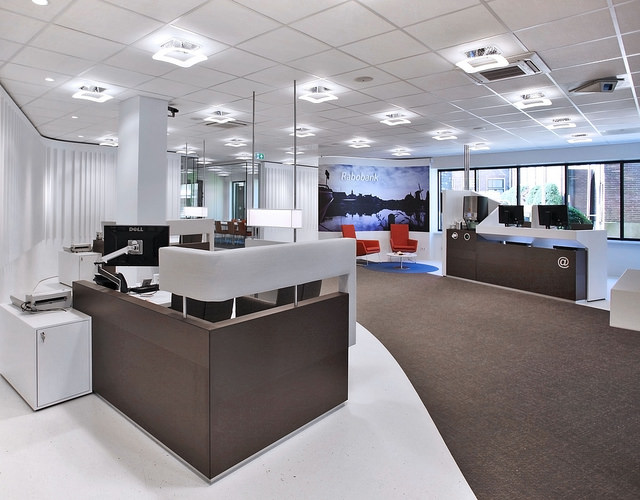Over the last twenty years, working life has changed out of all recognition and with it our expectations of how, where and when we work. As technology continues to advance at a frightening pace, how will offices operate in the future? Perhaps they’ll cease to exist altogether as we all revert to pyjama-clad recluses working from home on a permanent basis. A new report from Sodexo gives us a hint of what’s in store now and in the future.

Ben Kraan Architecten Office life
A changing workforce: Despite the recent recession, we now have the largest number of people in work since 1973 – with a 22% increase in workers aged over 50 and women accounting for just under half the workforce. However, it’s those born before 1980 who have the most significant influence on workplace culture – pushing the boundaries of office life in terms of flexible working and workplace design.
Technological advances: working remotely on the cloud is set to continue – accounting for one third of annual IT expenditure growth in 2013. Large servers and desktop computers are rapidly vanishing as iPads and tablets become the norm. The trend in bring your own devices will continue as workers now have access to better and faster technology at work than at home.

Dean Hochman post-it notes
Flexible working becomes the norm: despite continued reticence from some quarters, flexible working makes business sense. Studies who that those who can work effectively from remote locations, can work fifteen to twenty additional hours per week. A study of 5,000 UK directors has shown that within the next decade, 60% of office-based workers will regularly work from home. With flexible working coming second only to salary in the priorities of today’s workers, employers will be under increasing pressure to offer flexible working and job-sharing opportunities as a normal part of office life.
The office of the future: from bland and austere to warm and playful, there’s now a continuing shift to informality as laidback break-out spaces replace formal boardrooms and office spaces are increasingly viewed as a social hub to accommodate different working styles. It’s predicted that by 2020, organisations will reduce their office space by almost 20% – saving large corporates such as PricewaterhouseCoopers up to £10 million over a 10 year period.
Healthier offices: gone are the days of canteen jam roly-poly as evidence shows that a wide range of healthy food options are important to employees. Office workers also want to be more active – since 2000, there has been a 117% increase in the use of London’s cycle network as more workers abandon the tube in favour of pedal power.
Do you agree with these findings? Would you want to work from home on a permanent basis in the future? We would love to have your views.
These trends were provided courtesy of Sodexo’s recent research report, How Britain works: key trends in a workplace environment.
